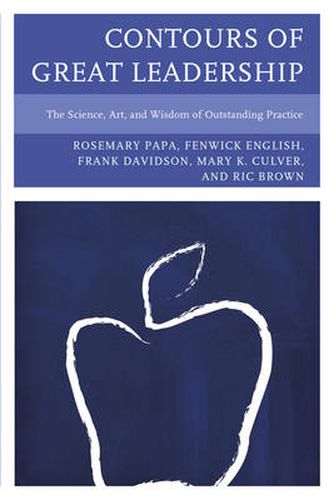Readings Newsletter
Become a Readings Member to make your shopping experience even easier.
Sign in or sign up for free!
You’re not far away from qualifying for FREE standard shipping within Australia
You’ve qualified for FREE standard shipping within Australia
The cart is loading…






A contour is usually defined as an outline or the structure or characteristic of something. A contour line which is shown on a contour map indicates points of elevation. We think that all of these definitions fit Contours of Great Leadership.
This book brings together many aspects of concepts and theories of leadership. It is an amalgam of ideas from the social sciences and the humanities woven together in the idea of leadership as an accoutrement, that is, a deliberate woven garment comprising science, art, experience, and craft knowledge. Thus we see leadership not as either/or an art or a science; or craft knowledge vs. scientific or research based knowledge, but rather as all of them combined and which occurs between followers and leaders within distinctive cultures and modes of communication.
The importance of context and culture as the milieu in which leadership is acquired and learned is critical. In the end leadership is a performing art form, which while it can be studied scientifically, cannot be understood solely as a science without connecting it to the arts and ultimately to practice.
$9.00 standard shipping within Australia
FREE standard shipping within Australia for orders over $100.00
Express & International shipping calculated at checkout
A contour is usually defined as an outline or the structure or characteristic of something. A contour line which is shown on a contour map indicates points of elevation. We think that all of these definitions fit Contours of Great Leadership.
This book brings together many aspects of concepts and theories of leadership. It is an amalgam of ideas from the social sciences and the humanities woven together in the idea of leadership as an accoutrement, that is, a deliberate woven garment comprising science, art, experience, and craft knowledge. Thus we see leadership not as either/or an art or a science; or craft knowledge vs. scientific or research based knowledge, but rather as all of them combined and which occurs between followers and leaders within distinctive cultures and modes of communication.
The importance of context and culture as the milieu in which leadership is acquired and learned is critical. In the end leadership is a performing art form, which while it can be studied scientifically, cannot be understood solely as a science without connecting it to the arts and ultimately to practice.